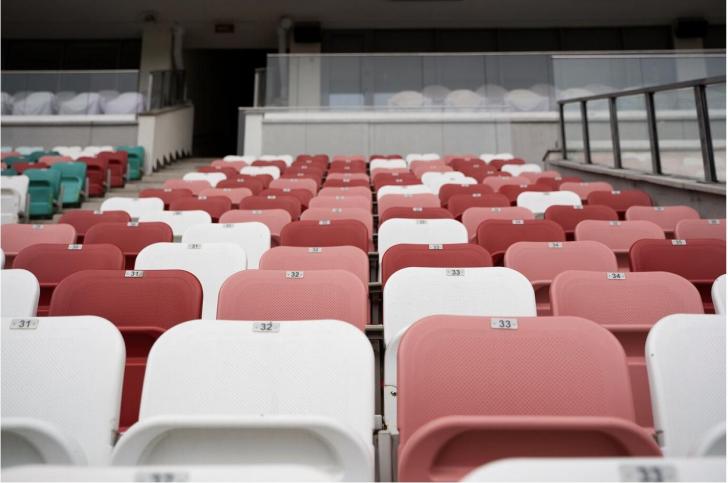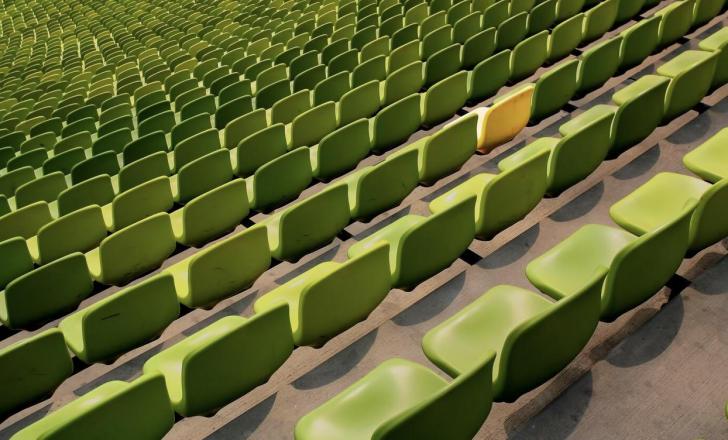Sports / Other
Conductive polymers for heated seats in outdoor stadiums
12 Jul 2024 at 09:57hrs |
0 Views

Wouldn’t it be nice to watch an exciting game and remain warm even if it is freezing outside? This concept of heated seats in outdoor stadiums has made this a possibility. Heated seats, just like sport betting online in Nigeria, make fans’ experience more comfortable. And that very comfort is brought by conductive polymers that are altering the way things have been done in the field for centuries. Thus, we can analyse the necessity of heated seating as well as evaluate what role conductive polymers play.
The Necessity of Heated Seating
At times, open-air sporting fields can get extremely cold during winter games. However, individuals still go ahead and cheer their teams, regardless of these chilly conditions. But sometimes, sitting at such times may be uncomfortable or even unbearable due to low temperatures. At this point comes heated seating, where winter sports offer you so many options to try out. Hence, warmed seats really create fun moments for fans while watching a match.
Stadiums are starting to realise this need and have begun investing in these systems. For instance, warmed seats keep people warm enough so they can stay longer until the end of a match and do not leave early with freezing cold legs or hands, making them feel like sticks frozen in ice. This also helps increase ticket sales and improve the overall fan experience, which therefore constitutes a win-win situation between fans and respective stakeholders.
Introduction to Conductive Polymers
One cannot talk about heated seats without mentioning conductive polymers since they are core materials for their production process. These polymeric substances bear the ability to transmit electricity, thus creating heat. Below are some main variants used within this system:
These polymers are integrated into the seats to provide even and reliable heating. They ensure that the seats warm up fast and remain at a comfortable temperature during the game. Hence, this technology is transforming how fans watch live games.
The Growth of Conductive Polymer Innovation
Conductive polymers have changed the way we stay warm at outdoor events. It is these materials that make heated seats possible. They are efficient and dependable, ensuring fans’ comfort irrespective of weather conditions. Let us now consider some notable improvements and innovations in this technology.
Developments in Heating Efficiency
Heating efficiency has increased significantly with conductive polymers. These materials effectively conduct electricity, converting energy into heat. This makes them ideal for stadiums’ heated seats.
Recently developed benches warm up quickly and maintain an even temperature throughout. No more do fans have to wait out in the cold for their benches to warm up. In addition, these polymers are energy-efficient, thus less power is required to keep the seats warm thereby improving stadiums’ environmental sustainability while cutting costs.
Safety and Comfort Enhancements
Safety is paramount when it comes to heated benches. Conductive polymers are made safe and reliable as such they reduce overheating risks as they ensure even distribution of heat. This keeps away any hot spots which may be uncomfortable or cause burns.
In addition, these materials enhance comfort. Conductive polymers can easily bend or elongate hence they are suitable for use on a bench. They take the shape of a seat, giving a comfortable warming all through the surface of a seat. Thus, spectators should not worry about catching a cold during the game.
Challenges of implementing heated seats
There are several points to consider:
These problems need to be solved so that heated seat implementations can begin successfully in stadiums.

Future Expectations
The future of heated outdoor stadium benches is promising. Technological advancements have made it easier and cheaper to install them. Conductive polymers are becoming more efficient and durable, which will help overcome some of the current challenges facing this technology.
Moreover, with an increasing number of groups embracing this concept, economies will lower costs. Fans can look forward to warmer outdoor events' seating arrangements that they like most. An enhanced technological aspect combined with more demand indicates a good future for heated stadium seating.
Final Words
For supporters, having heated benches in outdoor stadiums is a game-changer. With advanced conductive polymers, these chairs bring warmth and comfort to people watching sports, irrespective of weather conditions. Nevertheless, there are still challenges ahead, and the future holds greater prospects with continuous technological innovations taking place. Fans shall enjoy an improved experience at open-air functions in future times to come.
The Necessity of Heated Seating
At times, open-air sporting fields can get extremely cold during winter games. However, individuals still go ahead and cheer their teams, regardless of these chilly conditions. But sometimes, sitting at such times may be uncomfortable or even unbearable due to low temperatures. At this point comes heated seating, where winter sports offer you so many options to try out. Hence, warmed seats really create fun moments for fans while watching a match.
Stadiums are starting to realise this need and have begun investing in these systems. For instance, warmed seats keep people warm enough so they can stay longer until the end of a match and do not leave early with freezing cold legs or hands, making them feel like sticks frozen in ice. This also helps increase ticket sales and improve the overall fan experience, which therefore constitutes a win-win situation between fans and respective stakeholders.
Introduction to Conductive Polymers
One cannot talk about heated seats without mentioning conductive polymers since they are core materials for their production process. These polymeric substances bear the ability to transmit electricity, thus creating heat. Below are some main variants used within this system:
- Polyaniline: It is characterised by high stability and conductivity.
- Polypyrrole: Excellent electrical properties.
- Polyacetylene: A lightweight material that is quite flexible and ideally suited for seating.
- PEDOT: It has high conductivity and finds application in multiple spheres.
These polymers are integrated into the seats to provide even and reliable heating. They ensure that the seats warm up fast and remain at a comfortable temperature during the game. Hence, this technology is transforming how fans watch live games.
The Growth of Conductive Polymer Innovation
Conductive polymers have changed the way we stay warm at outdoor events. It is these materials that make heated seats possible. They are efficient and dependable, ensuring fans’ comfort irrespective of weather conditions. Let us now consider some notable improvements and innovations in this technology.
Developments in Heating Efficiency
Heating efficiency has increased significantly with conductive polymers. These materials effectively conduct electricity, converting energy into heat. This makes them ideal for stadiums’ heated seats.
Recently developed benches warm up quickly and maintain an even temperature throughout. No more do fans have to wait out in the cold for their benches to warm up. In addition, these polymers are energy-efficient, thus less power is required to keep the seats warm thereby improving stadiums’ environmental sustainability while cutting costs.
Safety and Comfort Enhancements
Safety is paramount when it comes to heated benches. Conductive polymers are made safe and reliable as such they reduce overheating risks as they ensure even distribution of heat. This keeps away any hot spots which may be uncomfortable or cause burns.
In addition, these materials enhance comfort. Conductive polymers can easily bend or elongate hence they are suitable for use on a bench. They take the shape of a seat, giving a comfortable warming all through the surface of a seat. Thus, spectators should not worry about catching a cold during the game.
Challenges of implementing heated seats
There are several points to consider:
- Expensive: Heated benches are costly. The cost includes materials and installation as well as maintenance.
- Power consumption: Heated seats draw a lot of power. This results in higher energy bills and environmental issues.
- Durable: These seats have to withstand rough weather conditions. Rain, snow and extreme temperatures can damage heating elements.
- Safety: It is essential to ensure that the heated benches are safe for use. They should not be prone to electrical faults or overheating.
These problems need to be solved so that heated seat implementations can begin successfully in stadiums.

Future Expectations
The future of heated outdoor stadium benches is promising. Technological advancements have made it easier and cheaper to install them. Conductive polymers are becoming more efficient and durable, which will help overcome some of the current challenges facing this technology.
Moreover, with an increasing number of groups embracing this concept, economies will lower costs. Fans can look forward to warmer outdoor events' seating arrangements that they like most. An enhanced technological aspect combined with more demand indicates a good future for heated stadium seating.
Final Words
For supporters, having heated benches in outdoor stadiums is a game-changer. With advanced conductive polymers, these chairs bring warmth and comfort to people watching sports, irrespective of weather conditions. Nevertheless, there are still challenges ahead, and the future holds greater prospects with continuous technological innovations taking place. Fans shall enjoy an improved experience at open-air functions in future times to come.
Source - Byo24News
Join the discussion
Loading comments…


















